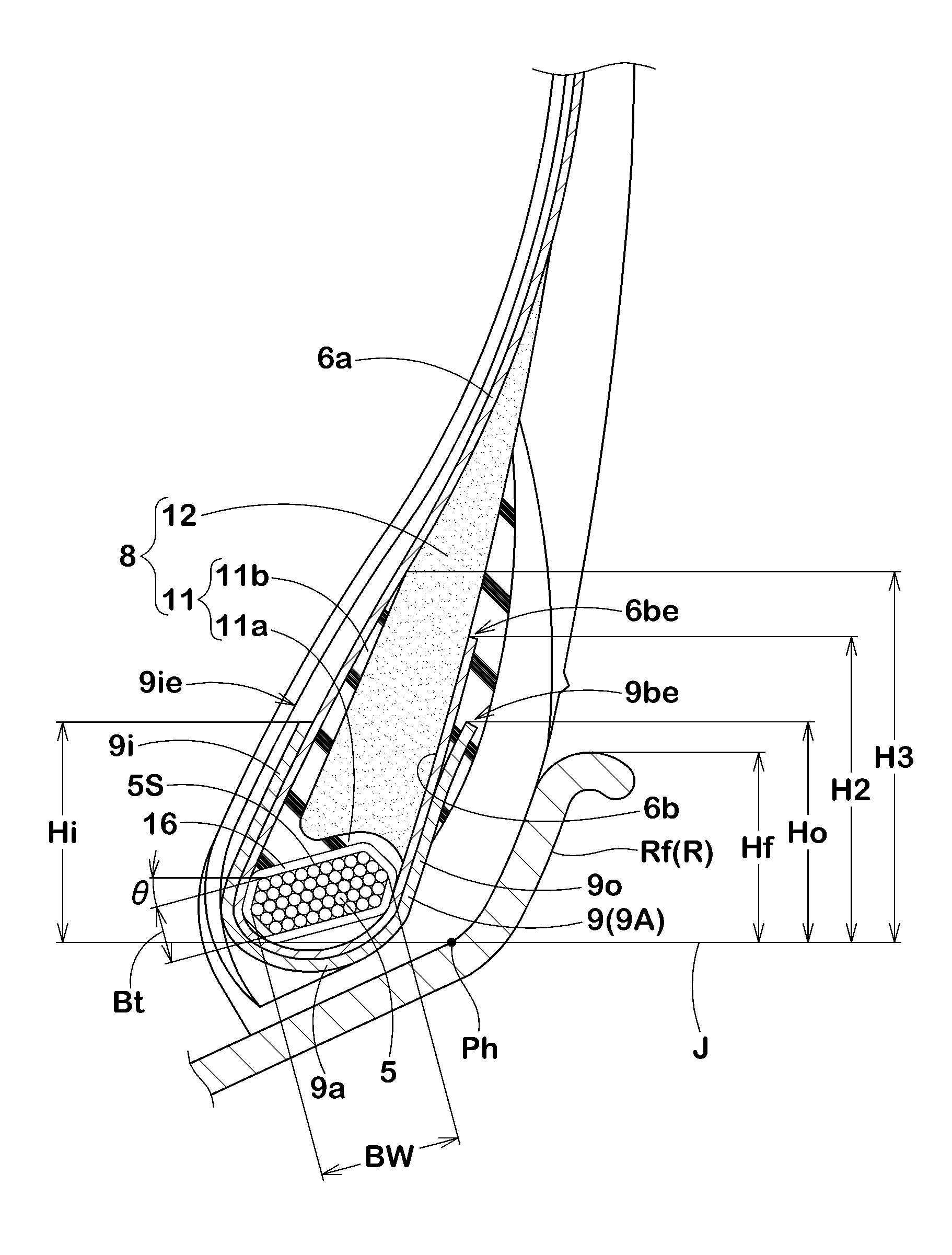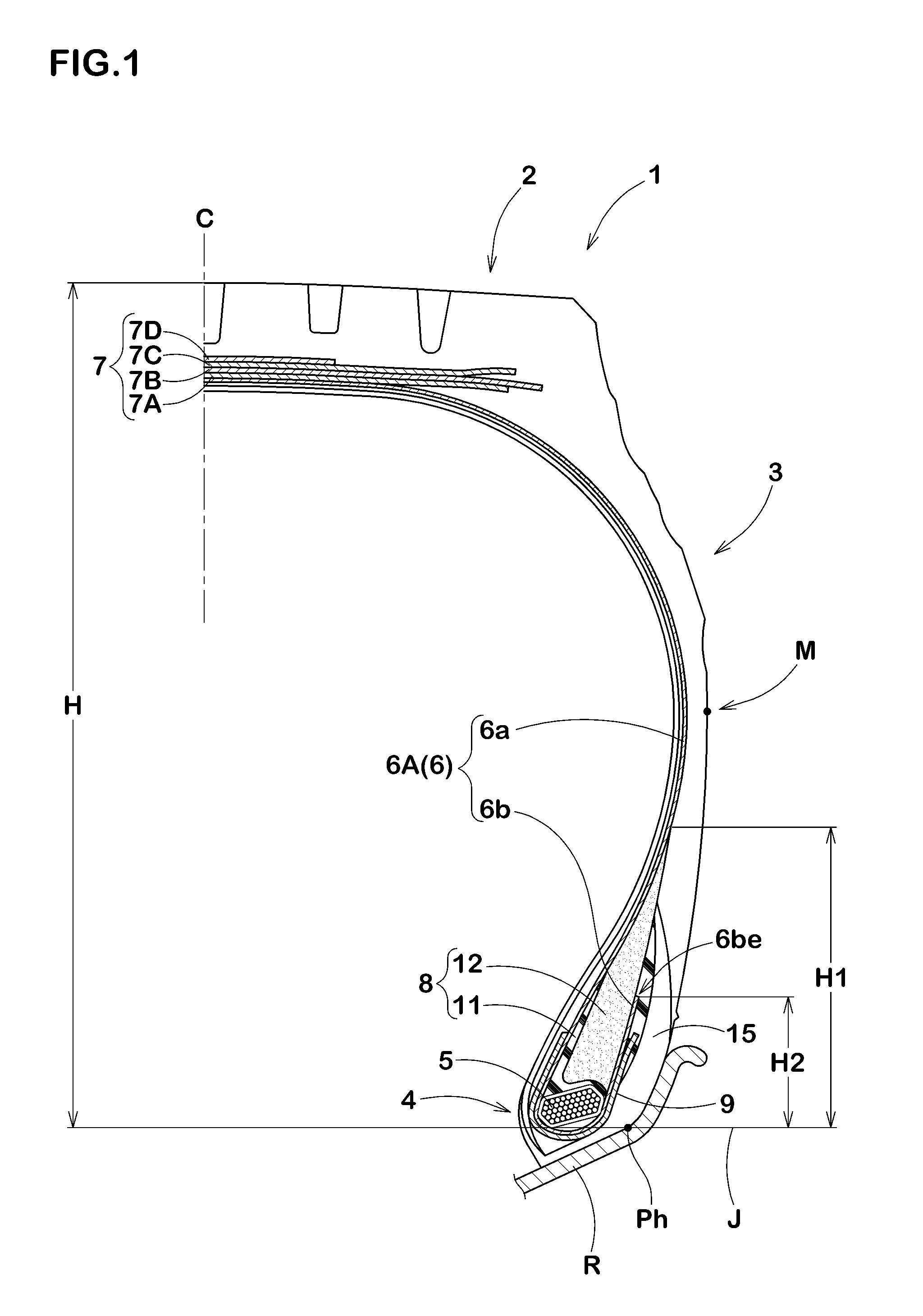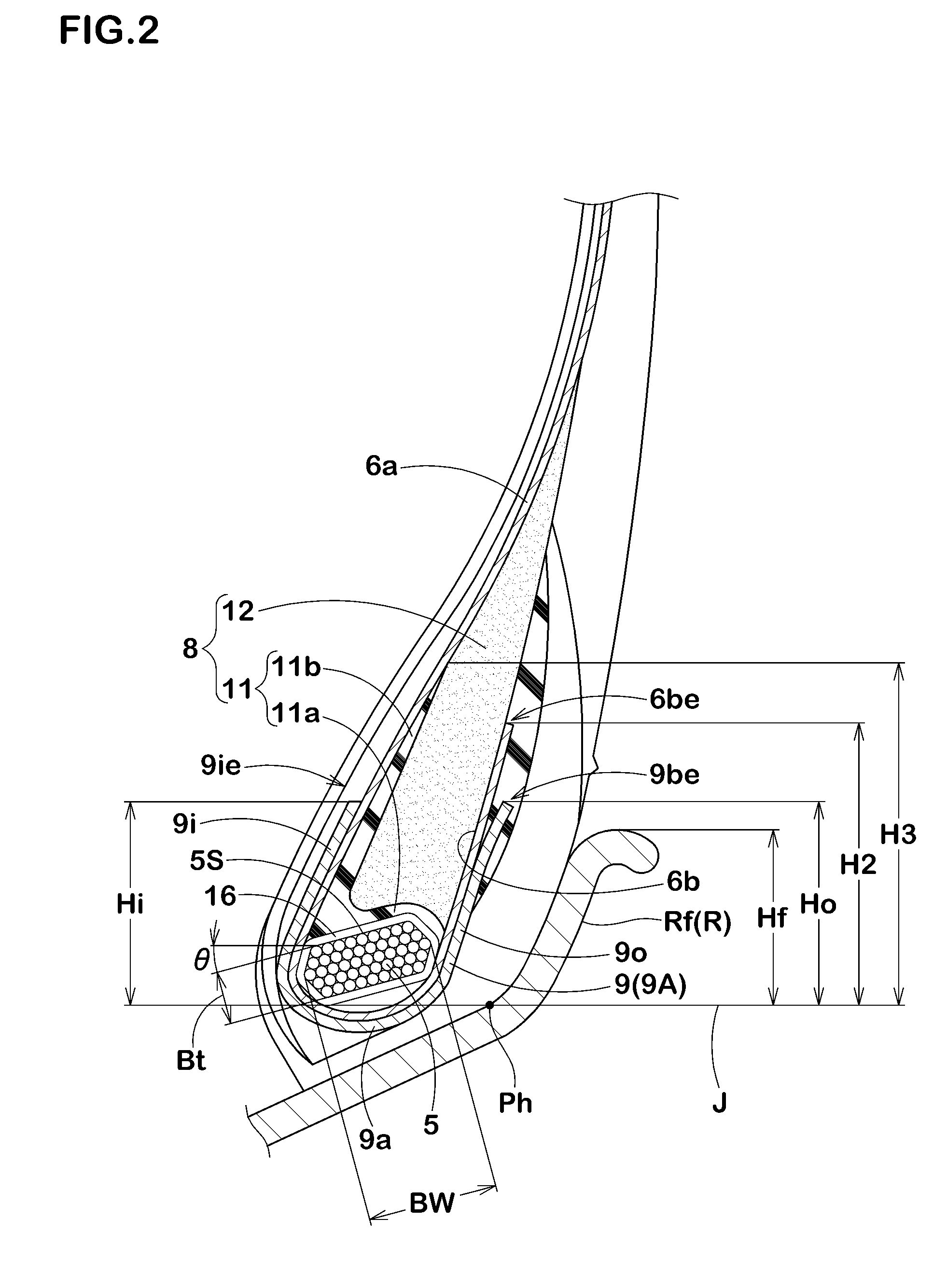Heavy-load radial tire
- Summary
- Abstract
- Description
- Claims
- Application Information
AI Technical Summary
Benefits of technology
Problems solved by technology
Method used
Image
Examples
Embodiment Construction
[0032]The following detailed description is made with reference to the figures.
[0033]Referring to FIG. 1, a heavy-load radial tire 1 according to the present embodiment is a tubeless tire mounted on a 15°-tapered rim R and includes: a toroidal carcass 6 that extends from a tread portion 2 through a side wall portion 3 to a bead core 5 of a bead section 4; a belt layer 7 disposed in the tread portion 2 and on the radially outer side of the carcass 6; a bead apex rubber 8 that extends radially outwardly from the bead core 5 in a tapered manner; and a bead reinforcing cord layer 9 disposed on the bead section 4.
[0034]The carcass 6 is formed of a carcass ply 6A having steel carcass cords aligned at an angle of 80 to 90° relative to a tire equator C. The carcass ply 6A includes a ply main portion 6a extending between bead cores 5. Provided at each end of the ply main portion 6a is a ply turnup portion 6b integral with the ply main portion 6a and turned up from the axially inner side to t...
PUM
 Login to View More
Login to View More Abstract
Description
Claims
Application Information
 Login to View More
Login to View More - R&D
- Intellectual Property
- Life Sciences
- Materials
- Tech Scout
- Unparalleled Data Quality
- Higher Quality Content
- 60% Fewer Hallucinations
Browse by: Latest US Patents, China's latest patents, Technical Efficacy Thesaurus, Application Domain, Technology Topic, Popular Technical Reports.
© 2025 PatSnap. All rights reserved.Legal|Privacy policy|Modern Slavery Act Transparency Statement|Sitemap|About US| Contact US: help@patsnap.com



